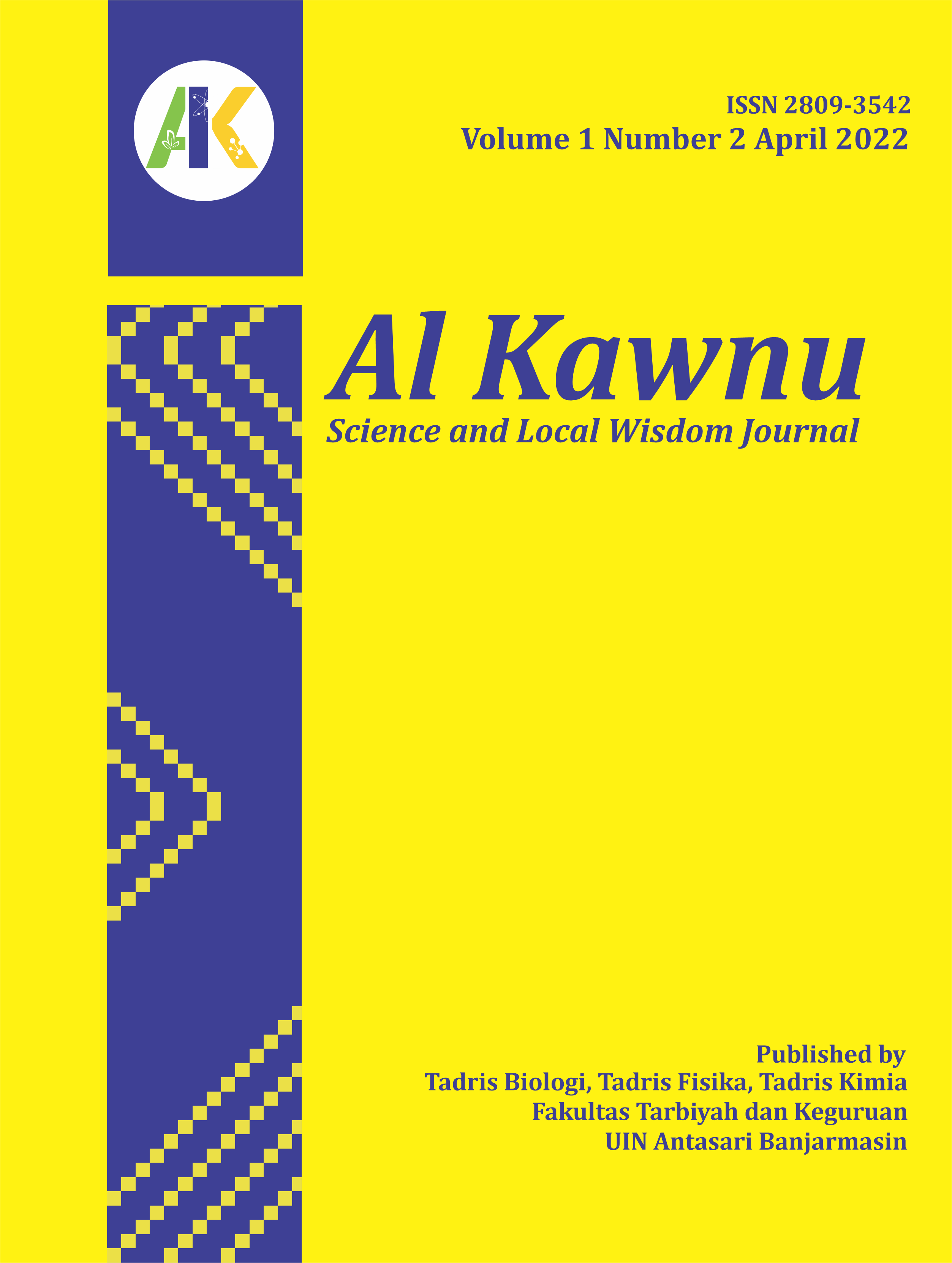Etnobotani Serai Wangi (Cymbopogon nardus (L.) Rendle) Desa Batang Kulur Kecamatan Kelumpang Barat Kotabaru
DOI:
https://doi.org/10.18592/ak.v1i2.6228Abstract
This study aims to describe the ethnobotanical study of the citronella plant (Cymbopogon nardus (L.) Rendle) for the people of Batang Kulur Village, Kelumpang Barat District, and to describe the validity of the pocket book on the ethnobotany study of the citronella plant (Cymbopogon nardus (L.) Rendle) for the Batang village community. Kulur District of West Kelumpang. This research is a field research with a qualitative descriptive research approach. Sources of research data are respondents, informants, and the results of the documentation. Data collection techniques were carried out by observation, interviews and documentation. The results of the study were developed into a pocket book using R&D research with the Tessmer 1998 formative evaluation model. Based on the results of data analysis, it was found that the botanical study of citronella (Cymbopogon nardus (L.) Rendle) has perennial terna habitus, root system of short rhizomes, and single leaves that have a distinctive odor. Ethnosocioanthropology studies are used as complementary materials in traditional Banjar Betimung activities in the local community. Ethnoeconomic studies of citronella leaves are traded for the basic ingredients of producing essential oils for making massage oil. Ethnopharmacology studies processed traditional ingredients as a treatment for aches and pains. The ethnoecological study of citronella is very easy to plant by separating the saplings of the plant.References
A’yun, Qurrotul, dkk., 2020. Analisis Rendeman Minyak Atsiri Serai Wangi (Cymbopogon nardus (L) Rendle) Pada Beberapa Varietas. Jurnal Pertanian Presisi. 4 (2):162.
Ramdiati, Nurlina, dkk., “Kajian Etnobotani Masyarakat Adat Kampung Pulo di Kabupaten Garut”, Majalah Ilmiah Biologi BIOSFERA: A Scientific Journal. 30 (1):38-50 2013.
Suryadarma, IGP, “Etnobotani”, 2008. Diktat Kuliah Universitas Negeri Yogyakarta.
Mirna Rahmah Lubis, dkk., 2012. Inovasi Hasil Riset Berbasis Produk Unggulan Daerah Untuk Meningkatkan Kesejahteraan Masyarakat. Jurnal Prosiding Seminar
Nasional Hasil Riset dan Standardisasi Industri II. 1 (1):222-223
Maqfirah Nur Ainun, ”Pengaruh Ekstrak n-Heksan Serai Wangi (Cymbopogon nardus (L.) Randle pada Berbagai Konsentrasi Terhadap Periode Menghisap Darah Dari Nyamuk Aedes aegypti”, skripsi; Fakultas Matematika dan Ilmu Pengetahuan Alam Universitas Hasanuddin Makassar, 2014.
Khasanah, Retno Atun, dkk., 2011. Pemanfaatan Ekstrak Sereh (Chymbopogon nardus L.) Sebagai Alternatif Anti Bakteri Staphylococcus Epidermis Pada Deodoran Parfume Spray. Jurnal Pelita, 6 (1):3-9.
Bohari, Megawati, “Identifikasi Jenis-Jenis Poaceae di Area Kampus 2 UIN Alauddin”, Skripsi; Fakultas Sains dan Teknologi UIN Alauddin Makassar, 2012.
Damanik, Sabarman. 2007. Analisis Ekonomi Usaha Serai Wangi (Studi Kasus Kecamatan Gunung Halu, Kabupaten Bandung Selatan. Jurnal Bul. Littro, 18 (2):204.
Elda Rizky Febria Ningsih, “Uji Efektivitas Ekstrak Serai Wangi (Cymbopogon nardus L.) Terhadap Pertumbuhan Colletotrichum gloeosporioides (Penz.) Sacc.”, Skripsi; Fakultas Pertanian dan Peternakan Universitas Islam Negeri Sultan Syarif Kasim Riau Pekanbaru, 2020.
Solikin. 2014. Jenis-Jenis Tumbuhan Suku Poaceae di Kebun Raya Purwodadi. Jurnal Biodiversitas. 5 (1):23-27.




